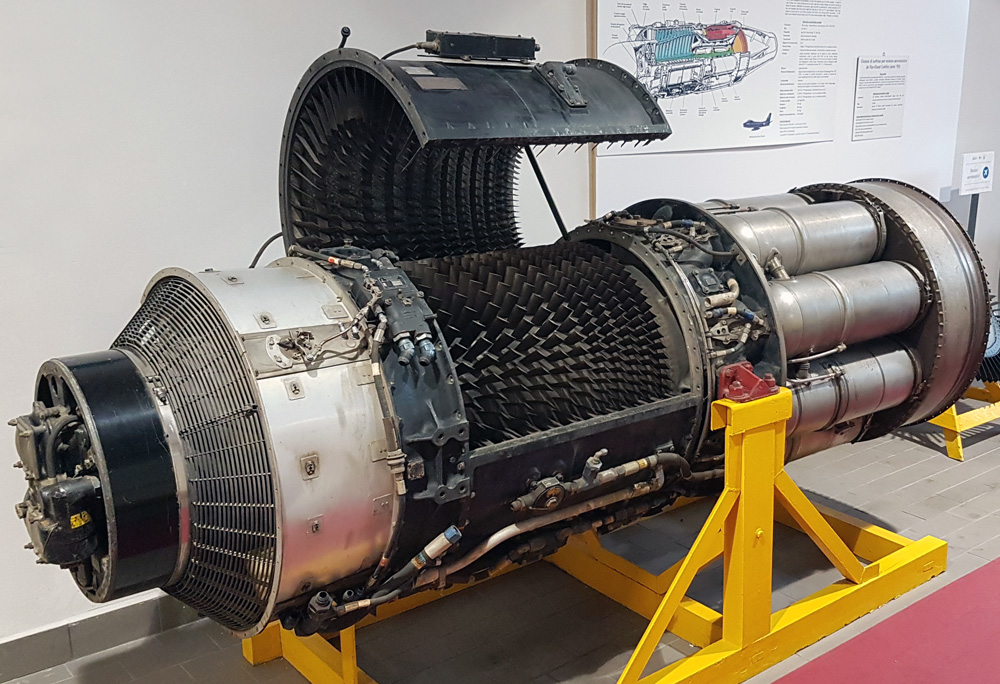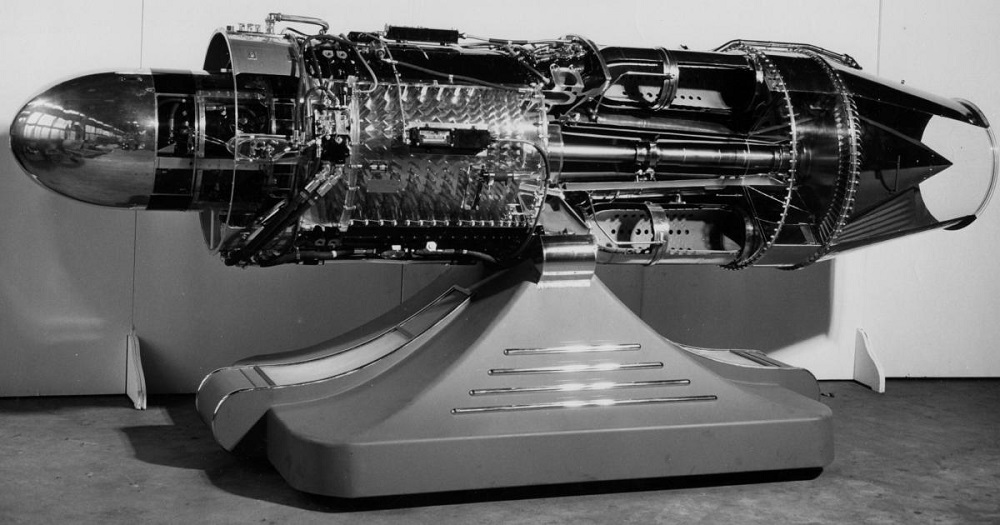
|
General Electric J47 |  |
||||||||
|---|---|---|---|---|---|---|---|---|---|---|
 |
 |
 |
 |
 |
 |
 |
 |
 |
 |
 Above, a J47 turbojet core engine. | |||||||||
|
The General Electric J47 turbojet engine (GE company designation TG-190) was developed by General Electric from its earlier J35 engine. It first flew in May 1948 and was the first axial-flow turbojet approved for commercial service, and the first to use an electrically-controlled afterburner to boost its thrust in the United States. It was used in many types of aircraft with more than 30,000 units manufactured before production ceased in 1956. It saw continuous service with the US military until 1978.
The J47 was a single-shaft, axial-flow turbojet engine with a 12-stage compressor and single-stage turbine. The engine was initially rated at 5,000 pounds of thrust, but later versions produced up to 7,500 pounds (33,360 N) of thrust with afterburner. It was a reliable and powerful engine, produced in at least 17 different series, and it played a major role in the development of post-war jet aircraft. It was used to power a wide variety of aircraft, including the North American F-86 Sabre, the Boeing B-47 Stratojet, North American B-45 Tornado bomber, Martin XB-51, North American FJ-2 Fury, Republic XF-91, and the Convair B-36 Peacemaker. The J47 also powered the first commercial jet airliner, the de Havilland Comet. The J47 was a major technological achievement, and it helped to establish General Electric as a leading manufacturer of jet engines. The engine was also a significant factor in the United States' victory in the Korean War. The F-86 Sabre, powered by the J47, was the superior aircraft in its dogfights with the Soviet MiG-15. Although it was retired from service in 1978, it's production remained an important era of aviation history. It was considered to be one of the most successful jet engines ever developed. | |||

|
|||
| Specifications: | |
|---|---|
| J47-GE-25 | Date: | 1947 | Type: | Turbojet |
| Compressor: | Single-spool 12-stage axial compressor |
| Length: | 145 in (3,700 mm) |
| Diameter: | 36.75 in (930 mm) |
| Thrust: | 5,970 lbf (25.56 kN) at 7950 rpm, 6,970 lbf (31.0 kN) with water injection. |
| Dry Weight: | 2,554 lb (1,158 kg) |
| Maximum Operating Altitude: | 50,000 ft (15,240 m) |
| Return To Engine Index. © Larry Dwyer. The Aviation History On-Line Museum. All rights reserved. Created September 24, 2023. | |